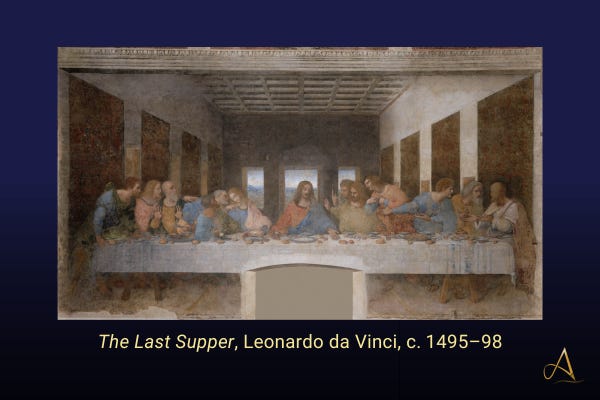Embracing the Unknown in Life and Art with Leonardo da Vinci
I’m testing a new format. Let me know what you think. Did I simplify the content too much?
What if mastering the worlds of art and science has less to do with the knowledge itself and more with the way we approach learning? Leonardo da Vinci's journey offers a fascinating glimpse into this question.
How did a boy with no formal education or connections rise to become a symbol of Renaissance brilliance, seamlessly blending art with science in ways that were previously thought impossible?
Imagine Renaissance Italy, a place where new ideas in art and knowledge were blooming, yet life was still framed by deep-rooted social hierarchies and rigid intellectual silos. It was an era that saw the likes of Michelangelo sculpting David and Raphael painting the School of Athens.
Born on April 15, 1452, in Vinci, Italy, Leonardo's beginnings had unlikely odds. The illegitimate son of a notary and a peasant woman, he was barred from formal education and traditional professions. Yet, it was this very exclusion that fueled his unquenchable thirst for knowledge, pushing him to observe the world with a keen eye and document his learnings in detailed journals.
His name, Leonardo da Vinci, literally means "Leonardo from Vinci," reflecting the common practice of the time to associate one's name with their place of origin, which in Leonardo's case was the small town of Vinci in the Tuscan region.
Leonardo's ambition to bridge the worlds of art and science was not just audacious—it was revolutionary. He broke into two of the most competitive fields on the planet, art and science, without any formal training or connections.
Leonardo's education was the world itself. His notebooks, filled with sketches of flying machines, anatomical studies, and landscapes, were not mere drawings but experiments in understanding the interconnectedness of all things. His relentless pursuit of knowledge and mastery through observation, experimentation, and, above all, doing, was groundbreaking.
“Learning never exhausts the mind.” - Leonardo da Vinci
The road was anything but smooth.
The stigma of illegitimacy limited his educational and professional opportunities.
His contemporaries were skeptical and often failed to grasp his visionary ideas.
Constant financial instability and the need to secure patronage led him to move often between cities in search of opportunities.
By the early 1500s, he nearly resigned himself to a life of unrealized potential.
The commission to paint The Last Supper marked Leonardo’s pivotal moment. His innovative use of perspective and emotional depth not only transformed his career but also set a new standard in the art world.
Leonardo's achievements are monumental and a testament to his resilience and ingenuity:
The Last Supper redefined religious art with its emotional depth and realism.
His anatomical studies bridged the gap between art and medical science, predating many discoveries.
The designs of flying machines and armored vehicles showcased a vision that seemed centuries ahead of its time.
“I have always felt it is my destiny to build a machine that would allow man to fly.” - Leonardo da Vinci
Above all, the Mona Lisa showcases his genius, blending deep emotion with precise skill in a way that still captivates and intrigues us.
Leonardo's life is a masterclass in the art of creation. His legacy is not just in the works he left behind but in his approach to life and learning—a relentless curiosity, a dedication to experimentation, and the courage to explore the unknown.
Leonardo da Vinci, the ultimate polymath, viewed learning as a boundless journey, blurring the lines between art and science, and reminding us that mastery lies in looking beyond conventional wisdom, embracing the world's complexity, continually asking questions, and finding connections across disparate fields.
Leonardo's story is more than a historical account. It's a blueprint for lifelong learning and intellectual exploration.









I like both formats! It ready easy, at the same time I always like to learn interesting facts!
Characterization of Leonardo Da Vinci is about to get radically revised. https://youtu.be/BxmU4WN6PZQ?si=Omku37wXFON9CTsU